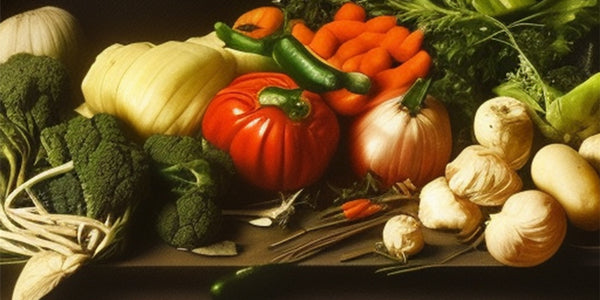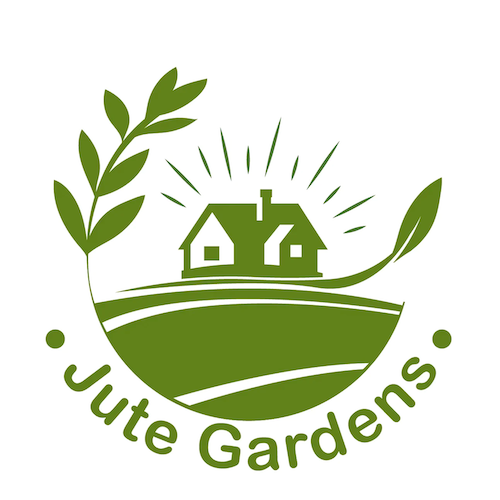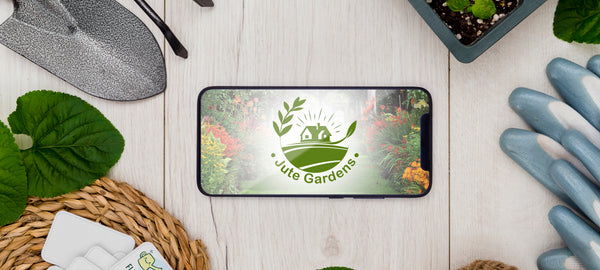
The Top Ten Foods to Grow at Home
Growing your food can be a great way to save money and get fresh, healthy produce right in your backyard. But with so many different fruits, vegetables, and herbs to choose from, it can be tough to know where to start. This article will outline the top ten foods to grow at home.
Why Should You Grow Food at Home?
There are several reasons why you should start a vegetable garden. First, growing your food can save you money. You can buy seed packets for a few dollars and grow a lot of produce this way. Second, growing your food is a great way to get fresh, healthy produce right in your kitchen or backyard. You can control the types of fertilizers and pesticides that are used in your vegetable garden, and you can also choose to grow organic produce. Finally, growing your food is a fun and rewarding hobby. You can try new varieties of fruits, vegetables, and herbs, and you can also experiment with different gardening techniques.
Rising Prices
The rising price of food is a major concern for many people. The cost of food has been rising faster than the rate of inflation for many years, and it is now costing more to buy basic staples such as bread, milk, and eggs.
There are several reasons for the high cost of food. First, the cost of inputs such as fertilizer, fuel, and pesticides has been rising. Second, transportation costs have increased due to higher fuel prices. And third, the demand for food has been increasing as the world's population continues to grow.
Many people are struggling to afford food in today's economy. Some families are forced to go without essential nutrients, while others are turning to expensive processed foods to save money.
Top Ten Foods To Grow at Home
To help you out, we've compiled a list of the top ten foods to grow at home.
Tomatoes
One of the most popular vegetables to grow at home, tomatoes are perfect for both beginner and experienced gardeners alike. With so many different varieties available, there's sure to be one that's perfect for your taste and growing conditions. You can grow them in your backyard or a pot on your porch. All you need is some soil, a sunny spot, and a few seeds.
Types of tomatoes
Some of the most popular types of tomatoes include:
- cherry tomatoes: These small, bite-sized tomatoes are perfect for snacking or using in salads.
- heirloom tomatoes: These unique tomatoes come in a variety of colors and sizes and have a delicious, earthy flavor.
- roma tomatoes: These large, red tomatoes are perfect for slicing and eating fresh or using in sauces and salsa.
The best conditions for growing tomatoes are a sunny spot with well-drained soil. Tomatoes need at least six hours of sunlight per day, and they grow best in warm weather. Make sure to water your tomatoes regularly, especially when it's hot and dry outside. You can also add compost or manure to the soil to help improve drainage and fertility.
Cucumbers
Another easy-to-grow vegetable, cucumbers are perfect for salads, sandwiches, or just eating plain. Like tomatoes, there are numerous varieties of cucumber available, so you can pick the one that's right for you.
Types of cucumbers
There are many different types of cucumbers. The most common type is the sliced cucumber, which is perfect for eating fresh or adding to salads. There are also pickling cucumbers, which are smaller and sourer. They're perfect for making pickles or adding to other recipes. English cucumbers are long and thin, and they have a mild flavor. They're perfect for eating raw or adding to salads. Lastly, there are Persian cucumbers, which are small and round with smooth skin. They have a mild flavor and a crunchy texture.
The best conditions for growing cucumbers are sunny, warm weather with plenty of moisture. Cucumbers need at least six hours of sunlight each day, and they grow best when the temperatures are above 65 degrees Fahrenheit. They also need plenty of water, so make sure to keep the soil moist.
Carrots
While they might take a little longer to mature than some other vegetables on this list, carrots are well worth the wait. Sweet and nutritious, they're a great addition to any meal. Plus, they're relatively easy to grow provided you have patience!
Type of carrots
There are several different types of carrots that you can grow at home. The most common type is the orange carrot. This type is the most popular in the United States and is the type that you probably think of when you think of carrots. There are also purple carrots and white carrots.
Lettuce
Lettuce is one of the easiest vegetables you can grow at home. Many people prefer to grow it in containers on their balconies or patios for convenience. All you need is a little sun and water, and you'll have fresh greens in no time.
Types of lettuce
There are many types of lettuce that you can grow at home. The most common type is green leaf lettuce. There are also red lettuce and romaine lettuce. All three types of lettuce have a sweet flavor and are nutritious.
All types of lettuce are relatively easy to grow, but some may be easier than others depending on your growing conditions.
Lettuce is a cool-season crop that does best in temperatures between 50 and 65 degrees Fahrenheit. It requires plenty of water and should be fertilized regularly. Lettuce is a relatively easy vegetable to grow, but it may be easier to grow in some climates than others.
Peppers
Another versatile vegetable, peppers can be used in everything from salads to main dishes. Plus, they come in a wide range of colors and sizes, so you can find the perfect pepper for your needs. Just be sure to give them plenty of sunshine and water!
Types of peppers
There are many different types of peppers that you can grow at home. The most common type is the bell pepper. This type is the most popular in the United States and Canada and is the type that you probably think of when you think of peppers. All types of bell peppers have a sweet flavor and are nutritious.
There are many different types of hot peppers that you can grow at home. The most common type is the jalapeño pepper. This type is the most popular in the United States and is the type that you probably think of when you think of hot peppers. Be sure to provide them with plenty of sunshine and water, and keep an eye on them for pests and diseases.
Eggplants
A bit more challenging to grow than some other vegetables on this list, eggplants are well worth the effort for any patient gardener. Whether you fry them up as part of the main dish or use them in a homemade ratatouille, these delicious vegetables will add a little something to your meals.
Types of eggplant
There are many different types of eggplant that you can grow at home. The most common type is the globe eggplant. This type is the most popular in the United States and Canada. There are also Japanese eggplants and Chinese eggplants. These varieties are less common, but they're worth trying if you can find them. All three types of eggplant have a sweet flavor and are nutritious.
The best conditions for growing eggplant are full sun and well-drained soil. Eggplants need plenty of water, so be sure to water them regularly. You may also want to mulch the soil around the plants to help keep them moist.
Pests and diseases can be a problem for eggplants, so be sure to keep an eye on them and take steps to prevent these problems.
Green Beans
A classic garden vegetable, green beans are easy to grow and very versatile. Whether you steam them as a side dish or add them to soups and stews, they'll add both flavor and nutrition to your meals. Just be sure to pick a variety that's suited for your climate!
Type of green beans
There are many different types of green beans that you can grow at home. The most common type is the pole bean. This type is the most popular in the United States and Canada. There are also bush beans and climbing beans. All three types of green beans have a sweet flavor and are nutritious.
The best conditions for growing green beans are full sun and well-drained soil. Green beans need plenty of water, so be sure to water them regularly. You may also want to mulch the soil around the plants to help keep them moist.
Squash
Both summer and winter squash are perfect for growing at home. Nutritious and delicious, they make a great addition to any meal. Plus, they come in so many different varieties that you're sure to reach ripe fruits all season long! Just remember to give them plenty of room to spread out as they grow.
Types of squash
Different types of squash include butternut, acorn, spaghetti, and pumpkins. They are all versatile vegetables that can be used in many different dishes.
The best conditions for growing squash are full sun and well-drained soil. Squash need plenty of water, so be sure to water them regularly. You may also want to mulch the soil around the plants to help keep them moist.
Squash was first brought to North America by Spanish explorers in the 1500s. Settlers began growing squash soon after they arrived, and the crop quickly became popular. Today, squash is a staple vegetable in Canadian and American cuisine.
Basil
Basil is not only a great herb to have on hand while cooking; it's also relatively easy to grow. Keep it in a pot near your kitchen door so you can snip off leaves as needed. It pairs well with tomatoes, so if you're already growing those, it's the perfect complement!
Types of basil
There are many different types of basil that you can grow at home. The most common type is sweet basil. There are also Thai basil, lemon basil, and holy basil.
The best conditions for growing basil are full sun and well-drained soil. Basil needs plenty of water, so be sure to water them regularly. You may also want to mulch the soil around the plants to help keep them moist. Vertical gardening is a great option for basil.
Chives
Chives are another herb that's easy to grow and super versatile. Use them in soups, salads, or as a garnish on just about anything! They also make a beautiful addition to any flower bed or garden.
Types of chives
There are two main types of chives: garlic chives and regular chives. Garlic chives have a stronger flavor than regular chives and are perfect for adding to dishes that have a savory taste. Regular chives have a milder flavor and are perfect for adding to dishes that have a sweet or sour taste.
The best conditions for growing chives are full sun and well-drained soil.
Foods to Grow At Home: Is This A Healthy Choice?
There are many reasons why growing your food is healthy and why you should find foods to grow at home. For one, you know exactly what's in your food. You can choose organic produce or grow your organic vegetables. You also have control over the nutrients and minerals that your food contains. Growing your food means it is fresh. Fresh food doesn't have to be cooked as long, which means that more of its nutrients and minerals are preserved. Cooking food for a long time can destroy many of its health benefits., growing your food is a great way to get exercise. Gardening is a great way to get some aerobic exercise and burn calories. It's also a great way to reduce stress levels and promote relaxation.
Tips for Growing Your Food at Home
- Make sure your soil is fertile and has the right pH level before planting. Soil quality is a critical component of a successful garden.
- Plant seeds following their instructions.
- Don't forget to water your plants regularly.
- Add organic matter to your soil to help improve its fertility.
- Use mulch around your plants to help retain moisture and reduce weed growth.
- Harvest your vegetables when they're ripe to get the most nutrients and flavor.
Raised Beds for Gardening
Raised beds are a great way to garden, especially if you don't have a lot of space. They're also a great way to garden if you have poor soil. You can create your own raised bed by using recycled materials such as old lumber, bricks, or cinder blocks.
The best conditions for growing plants in a raised bed are full sun and well-drained soil. Raised beds need plenty of water, so be sure to water them regularly. You may also want to mulch the soil around the plants to help keep them moist.
We hope this has given you some inspiration to get started growing food at home! And remember: even if you have limited outdoor space, you can always try container gardening, hanging baskets or vertical gardening such as Jute Gardens grow pots or vertical gardens.

